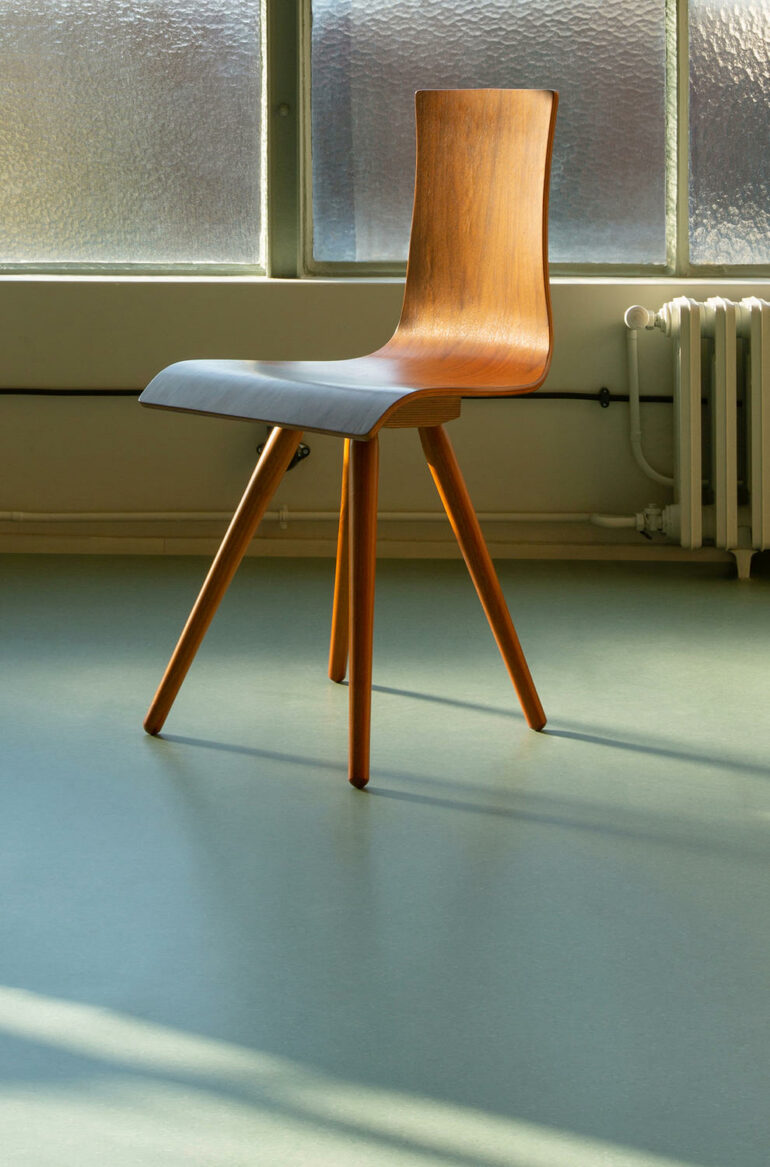Using less material in floors is a viable strategy for improving sustainability in buildings, as it can reduce the structure’s environmental footprint. Prioritizing only this goal, however, can lead to unwanted effects—such as an echo in a room or noise traveling between floors, according to Nathan Brown, assistant professor of architectural engineering.
Penn State researchers explored a method for optimizing the acoustic and structural properties of concrete floor slabs. Their findings were published online ahead of the March print edition of the Journal of Architectural Engineering.
“The exciting result of our research is that shaped structures can improve sound insulation performance in buildings while reducing the embodied carbon emissions of the structural system,” said Jonathan Broyles, an architectural engineering doctoral candidate and the first author of the paper.
To begin their investigation, the team used 3D modeling software to create shaped concrete slabs made up of many curves connected by movable control points. By providing the program with parameters to follow when moving these points, the researchers allowed the software to generate a variety of possible designs with realistic, customized constraints.
Continuing the effort to find a favorable design—a process called optimization—the researchers needed to test the generated designs’ performance in two areas. They analyzed structural properties, for meeting building engineering standards, and acoustic properties, for minimizing undesirable sounds.
“Traditional optimization is focused on targeting one value as a good or bad design, but in this case, we have two values: one to evaluate structural performance and another for acoustic performance,” said Brown, corresponding author on the paper. “We set up a model with some variables and used a computer algorithm to move through potential designs, targeting better options for both values at the same time.”
The team used a number of equations to inform their optimization constraints. In addition to considering mass, with a goal of reducing mass to reduce the emissions required to make and install a slab, the researchers also took shape and stiffness into account. Understanding the effect of each of these variables on acoustic properties would allow the team to reduce the power of transmitted sound waves hitting the slab, according to Brown.
Using optimization, the researchers identified concrete slab designs that used less concrete than a conventionally shaped slab and maintained desirable acoustic properties. These findings, Brown said, build a foundation for the design of shaped concrete floors that can be optimized for better interaction with sound without compromising sustainability.
Broyles said the research was motivated in part by his interdisciplinary interests.
“I came to Penn State to pursue research at the intersection of structural engineering and acoustic design,” Broyles said. “After I met with Dr. Brown, I realized that this topic could be explored in optimization studies of shaped concrete floors to help understand the relationship between sustainability and building acoustics.”
The team plans to apply the methods used in this research to understand the trade-offs between sustainability and performance in areas beyond acoustics. According to Brown, exploring this connection can lead to more sustainable buildings that do not compromise quality of life.
“This is what’s interesting to me about the design process—especially for building components that have to do many different things and achieve many quantitative performance targets while still possessing qualitative traits that make buildings places we want to dwell in,” Brown said. “A lot of my core research agenda lies in considering these quantitative objectives we can measure while still giving designers freedom and flexibility to think about those qualitative aspects.”
Micah Shepherd, assistant research professor of acoustics, also contributed to this work.
More information:
Jonathan M. Broyles et al, Design Optimization of Structural–Acoustic Spanning Concrete Elements in Buildings, Journal of Architectural Engineering (2021). DOI: 10.1061/(ASCE)AE.1943-5568.0000520
Provided by
Pennsylvania State University
Citation:
Balancing sustainability, safety and comfort in engineered floor slabs (2022, February 2)



